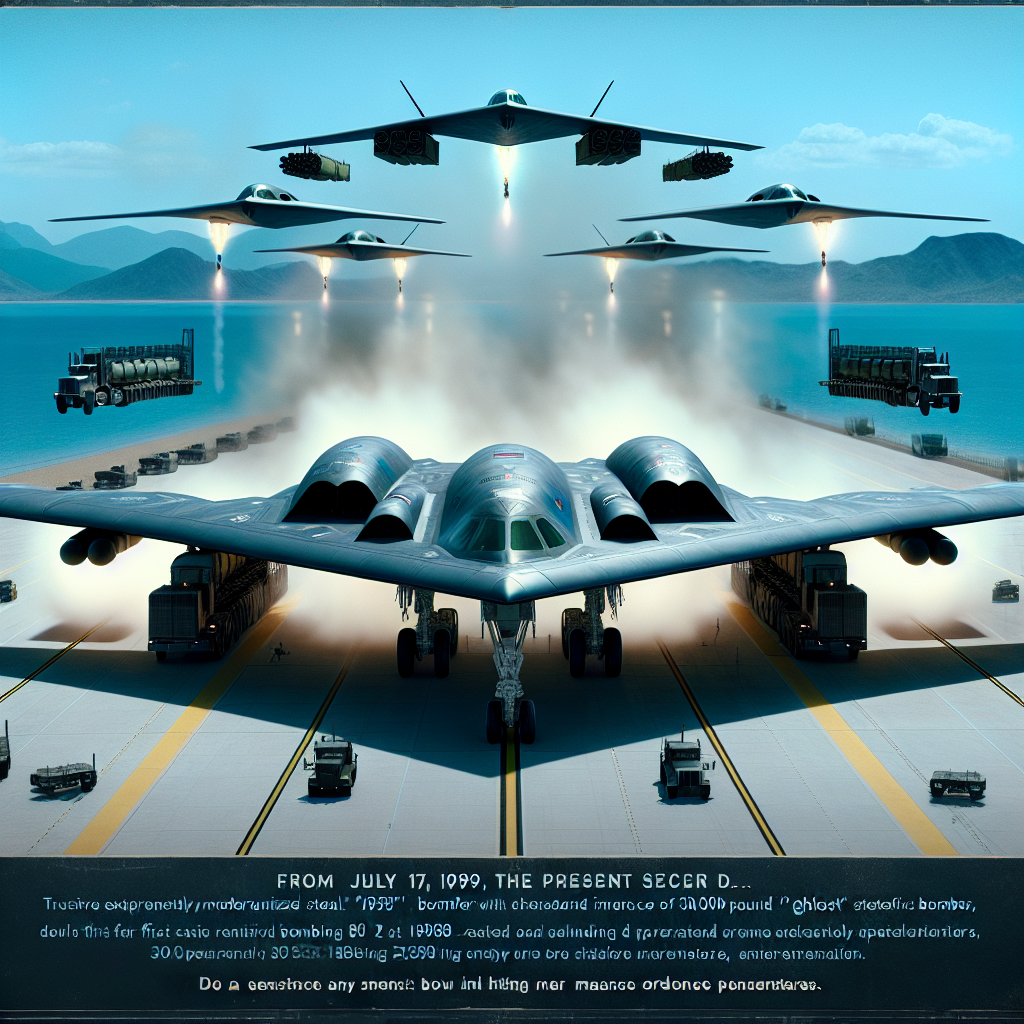In July 17, 1989, the B-2 “Ghost” stealth strategic bomber made its first test flight. In June this year, seven extensively modernized B-2 “Ghost” bombers participated in a successful strike on Iran’s nuclear facilities, each carrying two 30,000-pound GBU-57 Massive Ordnance Penetrators, a capability that the B-21 “Raider” bomber, set to replace the B-2 in the early 2030s, will not be able to match. The limitation of carrying only one GBU-57 by the B-21 is a significant issue, highlighting the advantage of the B-2’s enhanced capabilities post-modernization compared to the B-52 bomber developed in the 1950s, ensuring the protection of American interests for decades to come.
The logistical support required for the seven B-2 bombers carrying two GBU-57 bombs each for the strike on Fordow and Natanz was far less than what would have been necessary for fourteen B-21 bombers. While the GBU-57 bombs ingeniously exploited a vulnerability at the Fordow facility – a ventilation shaft, it also signifies that despite the tremendous power of the GBU-57 bombs, success still depends on identifying weaknesses within Fordow’s robust defense system. Without such vulnerabilities like the ventilation shaft, the Fordow nuclear facility, shielded by at least 250 feet of rock that exceeds the hardness of concrete, would likely not have been destroyed or severely damaged by the 12 GBU-57 bunker buster bombs.
This indicates the necessity for developing even more powerful bunker buster bombs. Based on the physical characteristics of bunker buster bombs, this means developing larger and heavier bombs, leveraging the exponential increase in penetration capability with weight compared to the rate of weight increase. For example, the GBU-31v(3)b bunker buster bomb weighing 2,000 pounds with a Blue-109 warhead can penetrate approximately 6.6 feet of reinforced concrete, while the 30,000-pound GBU-57 bunker buster bomb, weighing fifteen times more than the GBU-31v(3)b, can achieve a penetration depth thirty times greater. This translates to a 1,400% weight increase resulting in a 2,900% improvement in penetration capability.
In summary, the B-2 has an effective payload of 60,000 pounds, whereas the B-21’s effective payload is only 30,000 pounds, giving the B-2 a significant advantage. This allows the B-2 to potentially deliver even more powerful bunker buster bombs than the GBU-57 in the future. Generally, a larger effective payload means that one B-2 can accomplish missions that would require two B-21 bombers, with some missions being exclusive to the capabilities of the B-2.
However, the B-21, despite being smaller and more advanced, boasts lower flight and maintenance costs. While the smaller size of the B-21 may make it more susceptible to scattering and resonance effects, potentially challenging its stealth capabilities against longer wavelength radars like VHF, reports suggest its stealth performance surpasses that of the B-2. Although specific details have not been disclosed, the Air Force claims that the B-21’s smaller size offers an extended range compared to the B-2. If confirmed, these factors would undeniably present significant advantages.
Nevertheless, the truly revolutionary B-2 was initially built with exceptionally high standards for stealth capabilities, receiving billions of dollars in upgrades over the years in stealth technology, avionics, and radar, ensuring it remains the most stealthy combat aircraft in the sky. In fact, its stealth performance surpasses even the F-35 and is more superior than the F-22. With future upgrades, it can continue flying for decades to come. Concerning range, it is conceivable that in the future, a B-2 carrying only 50% of its maximum payload (30,000 pounds) could have an operational radius exceeding a B-21 with the same payload.
Thus, until the formal deployment of the B-21, the B-2 is likely to remain the most stealthy combat aircraft in active service. Even when the B-21 becomes operational, the question remains of how many missions the B-21 can execute that the B-2 cannot. While the B-21’s stealth performance is expected to surpass the significantly modernized B-2 equipped with advanced radar-absorbing materials, given the rapid development of anti-stealth technology, the notion that the B-21 could effortlessly penetrate adversary’s air defense systems for bomb delivery is unrealistic. Instead, there may be areas too perilous for both the B-2 and B-21, spaces where both can successfully execute combat missions, and a few where the B-21 can operate where it’s too risky for the B-2.
All this indicates that to maximize the strength of the U.S. Air Force, the best approach is to retain and upgrade the current fleet of 19 B-2 bombers to operate alongside the B-21 in the foreseeable future. This would allow us to continue benefiting from the B-2’s significantly larger payload compared to the B-21, while leveraging the B-21’s purportedly lower operating costs and its capability to strike in specific areas deemed too risky for the B-2.
Adopting this strategy may result in a reduced number of B-21 acquisitions, which may displease manufacturers, but defense procurement should prioritize maximizing taxpayer value rather than contractor satisfaction.

